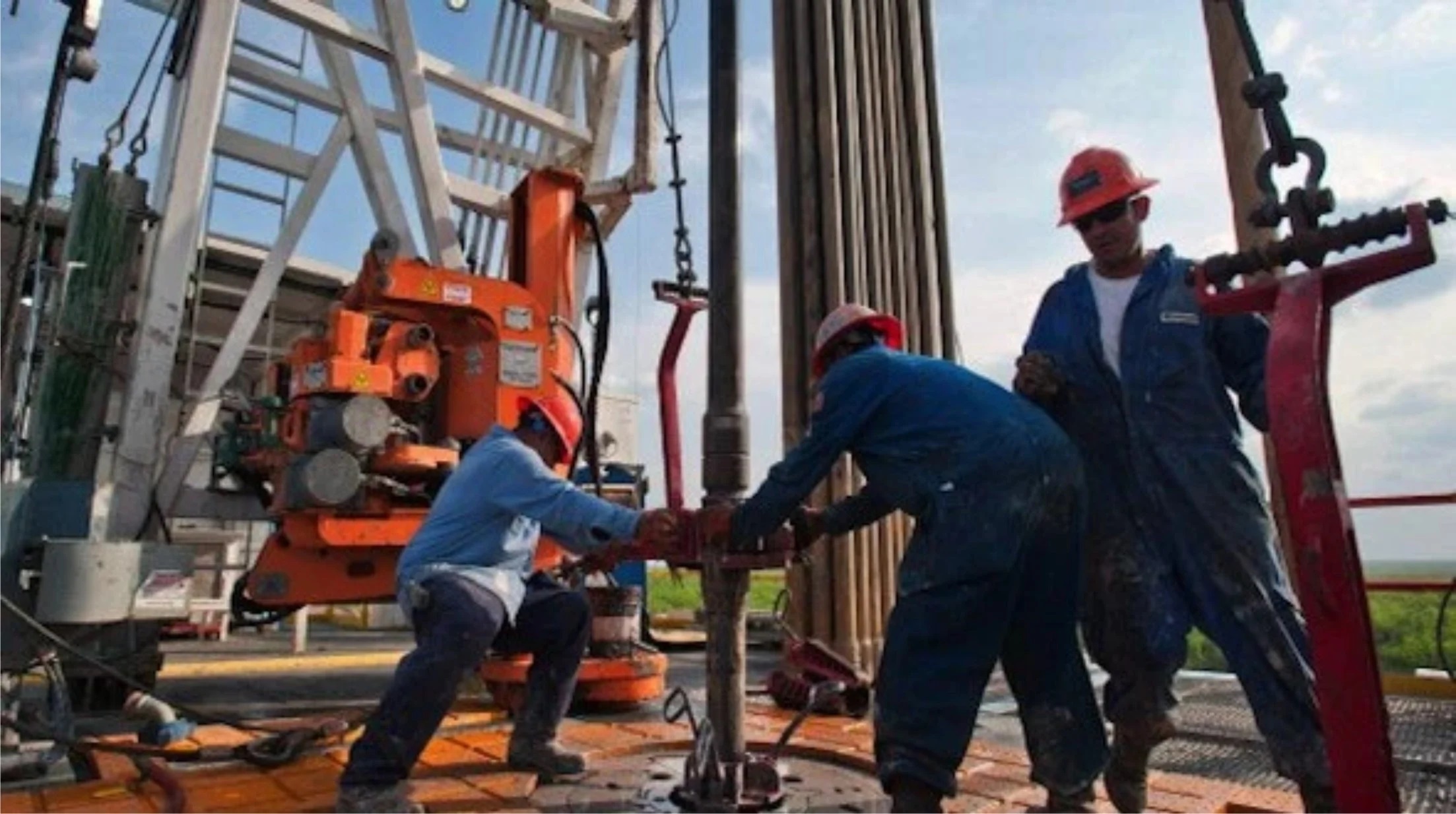Economy
Crude Oil Slips on Weak Chinese Demand Outlook

By Adedapo Adesanya
Crude oil went down on Thursday, with Brent down by 91 cents or 1.1 per cent to $80.80 a barrel and the US West Texas Intermediate (WTI) declining by 85 cents or 1.1 per cent to $76.74 per barrel.
The decline was influenced by weaker demand signals from the world’s biggest crude importer, outweighing support from the United States, the world’s largest oil producer.
Oil had risen on Wednesday, snapping consecutive sessions of declines after the Energy Information Administration (EIA) said US crude inventories fell by more than expected to 3.7 million barrels last week.
Despite draws in US crude and gasoline stocks, investors remained wary about weakening demand in China, and expectations of advancing ceasefire talks between Israel and Hamas added to the pressure.
China, the world’s biggest crude importer, surprised markets for a second time this week by conducting an unscheduled lending operation on Thursday at steeply lower rates, suggesting authorities are trying to provide heavier monetary stimulus to prop up the economy.
China’s oil imports and refinery runs this year have trended lower than in 2023 due to weaker fuel demand amid sluggish economic growth, government data shows.
In the Middle East, efforts to reach a ceasefire deal to end the war in Gaza between Israel and the militant group Hamas have gained momentum over the past month. A breakthrough could erode lingering threats to supply and send prices lower.
Meanwhile, Israeli forces advanced deeper into some towns on the eastern side of Khan Younis in southern Gaza on Thursday, hours after Israeli Prime Minister Benjamin Netanyahu told US lawmakers he was actively engaged in bringing hostages home.
Support came as the US economy grew 2.8 per cent in the second quarter, as consumers spent more and businesses increased investments, data showed.
At the same time, inflation pressures eased, which kept intact expectations that the US Federal Reserve would move forward with a September interest rate cut. Lower interest rates tend to boost economic activity, which can spur oil demand.
In Canada, it was reported that hundreds of wildfires are burning in the western provinces of British Columbia and Alberta, including in areas where there is oil.
Economy
No Discrepancies in Harmonised, Gazetted Tax Laws—Oyedele

By Adedapo Adesanya
The Chairman of the Presidential Fiscal Policy and Tax Reforms Committee, Mr Taiwo Oyedele, has said there are no discrepancies in the tax laws passed by the National Assembly and the gazetted versions made available to the public.
Last week, a member of the House of Representatives, Mr Abdussamad Dasuki, raised worries about the differences between its version and that gazetted by the presidency.
However, speaking on Channels Television’s Morning Brief on Monday, Mr Oyedele claimed what has been circulating in the media was fake.
“Before you can say there is a difference between what was gazetted and what was passed, we have what has not been gazetted. We don’t have what was passed,” he said.
“The official harmonised bills certified by the clerk, which the National Assembly sent to the President, we don’t have a copy to compare. Only the lawmakers can say authoritatively what we sent.
“It should be the House of Representatives or Senate version. It should be the harmonised version certified by the clerk. Even me, I cannot say that I have it. I only have what was presented to Mr President to sign.”
Mr Oyedele stated that he reached out to the House of Representatives Committee regarding a particular Section 41 (8), which states, “You have to pay a deposit of 20 per cent.”
He noted that the response given by the committee was that its members had not met on the issue.
“I know that particular provision is not in the final gazette, but it was in the draft gazette. Some people decided that they should write the report of the committee before the committee had met, and it had circulated everywhere.
“What is out there in the media did not come from the committee set up by the House of Representatives. I think we should allow them do the investigation,” Mr Oyedele added.
In June, President Bola Tinubu signed the four tax reform bills into law, marking what the government has described as the most significant overhaul of the country’s tax system in decades.
The tax reform laws, which faced stiff opposition from federal lawmakers from the northern part of the country before their passage, are scheduled to take effect on January 1, 2026.
The laws include the Nigeria Tax Act, the Nigeria Tax Administration Act, the Nigeria Revenue Service (Establishment) Act, and the Joint Revenue Board (Establishment) Act, all operating under a single authority, the Nigeria Revenue Service.
Economy
Aluminium Extrusion Surges 59.35% to Lead NGX Weekly Gainers’ Chart

By Dipo Olowookere
A total of 55 equities appreciated last week on the Nigerian Exchange (NGX) Limited versus the 49 equities recorded a week earlier.
However, 33 stocks closed lower compared with 41 stocks in the previous week, while 55 shares remained unchanged versus 57 shares of the preceding week.
Leading the advancers’ log was Aluminium Extrusion, which gained 59.35 per cent to close at N12.35, Mecure Industries rose by 44.93 per cent to N55.00, First Holdco appreciated by 42.93 per cent to N44.95, Guinness Nigeria improved by 33.01 per cent to N289.70, and NPF Microfinance Bank grew by 20.65 per cent to N3.74.
On the flip side, Living Trust Mortgage Bank lost 11.38 per cent to settle at N3.35, Japaul declined by 10.53 per cent to N2.38, International Energy Insurance slipped by 9.92 per cent to N2.27, FTN Cocoa depreciated by 9.80 per cent to N4.42, and Stanbic IBTC went down by 9.33 per cent to N95.20.
The buying interest in the week raised the All-Share Index (ASI) and the market capitalisation by 1.76 per cent to 152,057.38 points and N96.937 trillion, respectively.
Similarly, all other indices finished higher with the exception of AFR Bank Value, and the energy indices, which fell by 1.38 per cent and 0.17 per cent apiece.
According to trading data, a total 9.849 billion shares worth N305.843 billion in 126,584 deals exchanged hands in the five-day trading week compared with the 4.373 billion shares valued at N97.783 billion traded in 110,736 deals a week earlier.
The financial services industry led the activity chart with 8.295 billion shares valued at N232.223 billion traded in 50,351 deals, contributing 84.22 per cent and 75.93 per cent to the total trading volume and value, respectively.
The healthcare space followed with 517.443 million shares worth N3.472 billion in 2,979 deals, and the consumer goods counter transacted 392.765 million shares worth N12.664 billion in 18,438 deals.
The trio of Ecobank, First Holdco, and Access Holdings accounted for 6.424 billion shares worth N204.629 billion in 11,362 deals, contributing 65.23 per cent and 66.91 per cent to the total trading volume and value, respectively.
Economy
NEPC to Disburse $50m Digital Women Empowerment Fund Q1 2026

By Adedapo Adesanya
The Nigerian Export Promotion Council (NEPC) has assured beneficiaries of the $50 million Women Exporters in the Digital Economy (WEIDE) Fund to expect the first tranche of grants in the first quarter of 2026, following the completion of ongoing capacity-building and compliance processes.
The assurance was given during a Town Hall Meeting for WEIDE Fund beneficiaries held in Abuja over the weekend. The gathering provided an opportunity to review progress made since the launch of the initiative in August 2025.
The $50 million WEIDE Fund is a global initiative by the WTO and ITC to empower women-led businesses in developing countries, especially Nigeria, by providing training, finance, and market access for digital trade, helping them grow from small enterprises to global players through support like grants and mentorship, as seen in its launch phase benefiting 146 Nigerian women entrepreneurs.
Speaking at the event, the chief executive of NEPC, Mrs Nonye Ayeni, called on beneficiaries to maximize the opportunities provided by the programme, emphasizing the progress made and the milestones achieved since its launch.
Mrs Ayeni said the engagement was meant to review the programme’s achievements, identify areas for improvement, and strengthen support for the beneficiaries.
“So, it’s time for us to get together at the end of the year to see how far we’ve gone, how well we’ve done, and what we need to do to make it better and support them more effectively through the WEIDE Fund,” she said.
Mrs Ayeni highlighted the significant capacity-building activities conducted for the 146 selected women entrepreneurs, noting that top-tier coaches and trainers had been deployed immediately after the official launch by the Director General of the World Trade Organisation (WTO), Mrs Ngozi Okonjo-Iweala.
“These coaches are exceptional. They’ve trained our beneficiaries in financial literacy, bookkeeping, soft skills, leadership, succession planning, and digital tools so they can compete globally,” she said.
-

 Feature/OPED6 years ago
Feature/OPED6 years agoDavos was Different this year
-
Travel/Tourism9 years ago
Lagos Seals Western Lodge Hotel In Ikorodu
-

 Showbiz3 years ago
Showbiz3 years agoEstranged Lover Releases Videos of Empress Njamah Bathing
-

 Banking7 years ago
Banking7 years agoSort Codes of GTBank Branches in Nigeria
-

 Economy3 years ago
Economy3 years agoSubsidy Removal: CNG at N130 Per Litre Cheaper Than Petrol—IPMAN
-

 Banking3 years ago
Banking3 years agoFirst Bank Announces Planned Downtime
-

 Banking3 years ago
Banking3 years agoSort Codes of UBA Branches in Nigeria
-

 Sports3 years ago
Sports3 years agoHighest Paid Nigerian Footballer – How Much Do Nigerian Footballers Earn
















